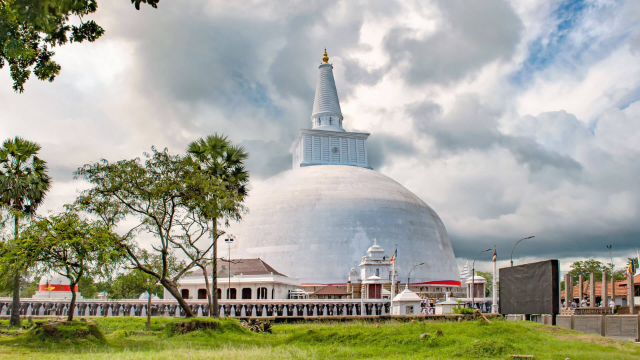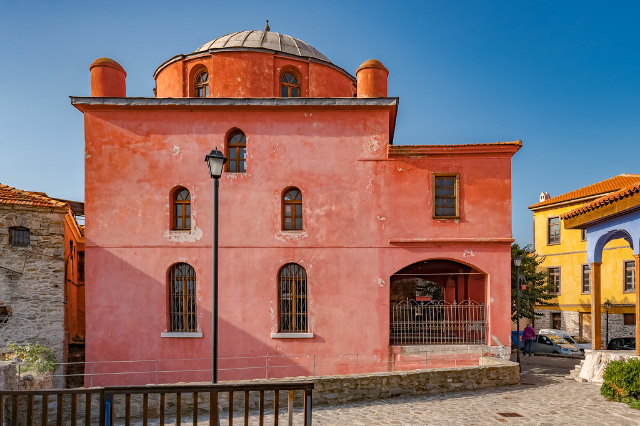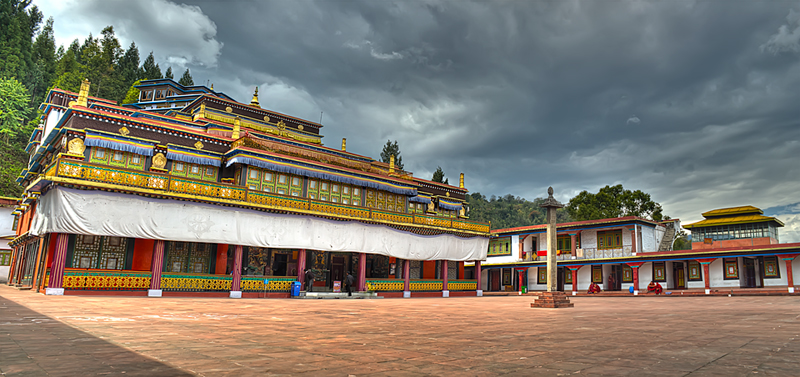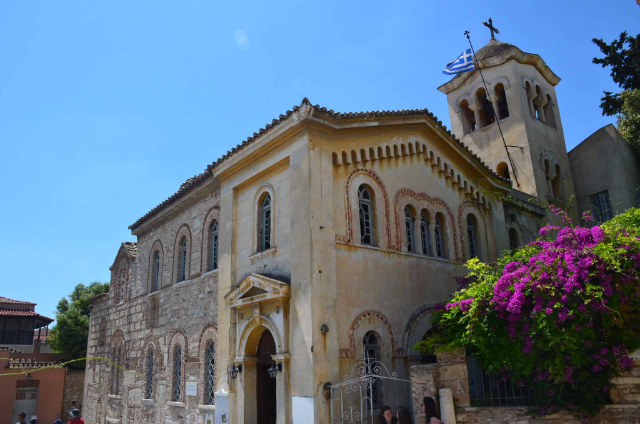The origin of the Sanctuary of St. Michael can be placed between the late 5th and early 6th centuries. Ancient written sources bear witness to this: a letter sent by Pope Gelasius I in 493/494 to Justus, bishop of Larino, another letter from the same Pontiff to Herculentius, bishop of Potenza (492 – 496), and again a note reported by the Geronimian Martyrology under the date of September 29.
But it is the Liber de apparitione santi Michaelis in Monte Gargano, the writing of which dates back to the 8th century, that reconstructs in a precise and suggestive manner together the miraculous facts that gave rise to the cult of Archangel Michael on the Gargano. It is linked to the memory of four apparitions that occurred over the centuries, which are narrated with extraordinary and moving vividness and bear witness to the miraculous events that happened here.
The sacred Grotto has been chosen for centuries as a place of pilgrimage, a place of prayer and above all of reconciliation with God. Indeed, the apparitions are a sign, an invitation addressed to man to bow before the Divine Majesty. Over fifteen centuries of history, Christians from all over the world have come to the Gargano Shrine, "house of God and gateway to heaven," to find peace and forgiveness in the loving arms of the Father and to honor the Archangel St. Michael.
Entering through the Romanesque portal, we find ourselves inside the heavenly Basilica, in the place chosen by St. Michael. From the whole atmosphere of the sacred place emanates a dark and mysterious beam that materializes in the play of light and shadow among the recesses and in the glittering presence of the urn enclosing the statue the statue of St. Michael the Archangel of incomparable expressiveness. An overpowering desire to surrender to divine forgiveness creeps into the heart: it is the warrior Archangel’s invitation to overcome our weaknesses and resume our journey, strong in the forgiveness of all our sins. The Church, not consecrated by human hand, is well separated into two parts: one as soon as you enter, built of masonry, called the Angevin Nave, and another in its natural state, a cavern opened by nature itself in the limestone rock.
As soon as we enter, on the right, we find a small altar, erected in honor of St. Francis: a reminder of his visit to our shrine, made back in 1216.
As the story goes, St. Francis, having arrived at Monte Sant’Angelo to earn angelic forgiveness, not feeling worthy to enter the Grotto, stopped in prayer and recollection at the entrance, kissed the ground and engraved on a stone the sign of a cross in the form of a "T" (tau). In biblical language the "T" sign was a symbol of salvation. From this story we can understand how much importance the Poor Man of Assisi attached to this Grotto because of the special dignity of the holy place and in order to the salvation of souls. A few steps past the altar of St. Francis, a unique spectacle opens before the visitor: the cave, with its irregular rocky vault, which over the centuries has welcomed millions of pilgrims, the place where so many sinners have found forgiveness and peace. There, the believer feels like the prodigal son returning to the Father’s house, guided and protected by St. Michael.
The interior of this cave, consecrated not by human hand but by St. Michael himself (as he declared in one of his apparitions), testifies with its various elements to the centuries-old history.
We can admire the following works here:
In the presbytery:
the statue of St. Michael protector of this holy place, the work of Andrea Contucci also known as Sansovino (1507), carved in white Carrara marble representing the Prince of the heavenly militia, in the attitude of a warrior trampling Satan in the guise of a monster,
the episcopal chair (first half of the 11th century),
the statue of St. Sebastian (15th century),
Next to the presbytery:
the altar of Our Lady of Perpetual Help (one of the oldest altars in the Celestial Basilica),
the high relief of the Holy Trinity,
the statue of Our Lady known as Our Lady of Constantinople,
the bas-relief of St. Matthew the Apostle and Evangelist.
In a small cave, called the Pozzetto, a stone simulacrum of St. Michael from the 15th century.
A cavity in the Grotto called the Quarry of Stones in emergency exit.
Continuing on, we observe the royal throne and two altars with canopies: of the Crucifix and St. Peter.
THE CRIPTS.
The most striking part of the sanctuary’s ancient buildings are the Crypts. These rooms date back to the Longobard era and have come to light as a result of excavations promoted by Bishop Nicola Quitadamo in the years 1949-1960. They once served as the entrance to the Grotto and were finally abandoned in the 13th century, at the time of Angevin constructions. Numerous inscriptions along the walls of the "crypts," some in runic characters, testify to the considerable influx of pilgrims from all over Europe since the Lombard era.
The crypts consist of two rooms whose structures must have been built in two phases immediately following each other. Some wall inscriptions identified in 1974 made it possible to date the constructions between the late 7th and early 8th centuries.
The crypts, about 60 meters long, extend all the way under the floor of the Basilica. The first part of the has the form of a porticoed gallery, divided into eight rectangular bays. In this evocative environment, several sculptures from the excavations of the sanctuary, the former church of St. Peter and the ruins of the Benedictine abbey of St. Mary of Pulsano have been displayed. All the exhibits here date from the 7th-8th centuries to the 15th century. Visiting the museum, one can admire several sculptures that once again testify to the glorious history of this place.
Passing through the opening carved in the retaining wall, we find ourselves in the other room of the Lombard period, (with clear traces of pre-Longobard constructions) divided into two wide naves, marked by a central flight of three round arches, and bordered on the north and south by as many arches supported by massive pillars. The aisles were occupied by the staircases: the one on the right, with a curvilinear course, is preserved in its entirety; the one on the left, with a straight course, was destroyed during construction. The two staircases terminated on a small slab, bordered on the east by an apse, with a block altar in squared ashlars, with traces of numerous inscriptions. To the left of the altar was found, protected by stone slabs, a fresco called the Custos Ecclesiae that can be attributed to the 10th century. From the remains of the frescoes and the numerous wall inscriptions, we can understand the importance of the shrine, especially for the Lombards.
These rooms were permanently separated from the Sacred Grotto around the years 1270-1275, when the Angevins, with new buildings, gave the Shrine its present layout, sacrificing the previous works erected in honor of St. Michael the Archangel.













